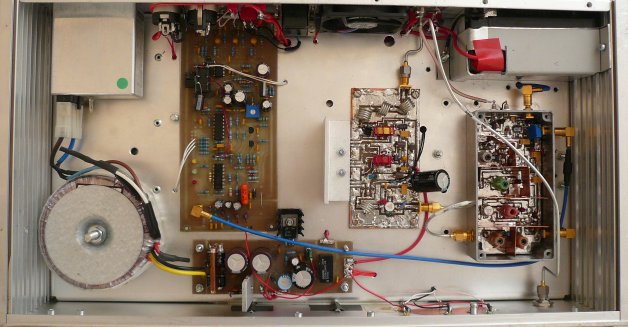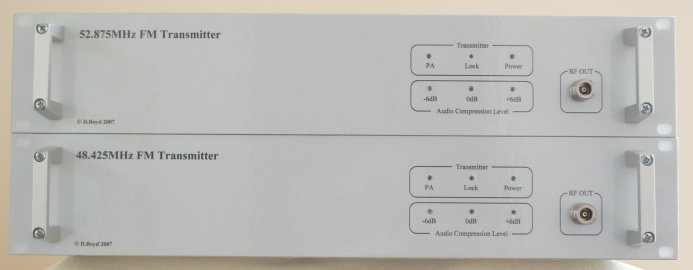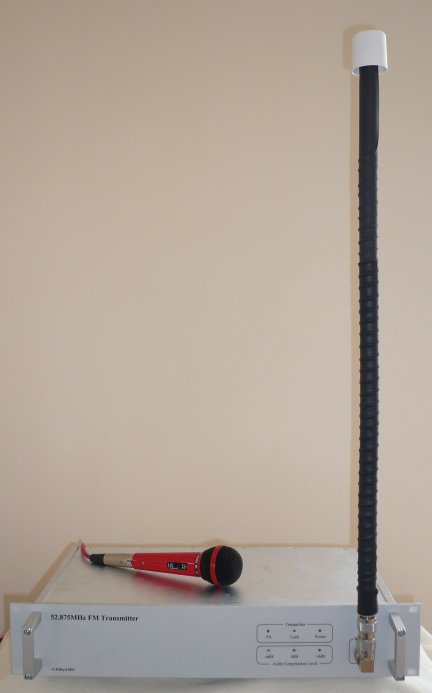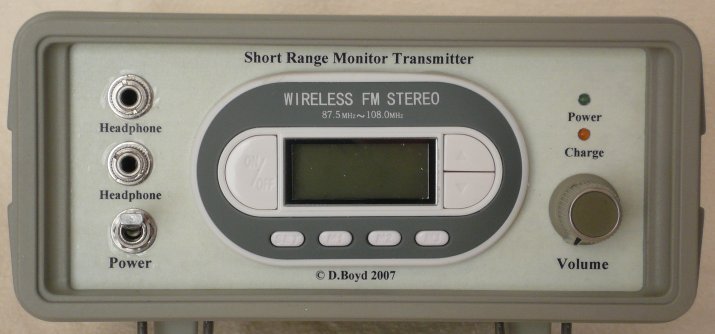
More 50MHz FM Hospital Radio
One thing that was always a worry with the 50MHz equipment shown elsewhere,
was, ‘what if it breaks down during an outside broadcast?’ Many volunteers invest hundreds
of hours in these events and there are of course the expectations from listeners and
sponsors who may be donating prizes or the use of a shop unit for example.
It would make sense to have some backup equipment not only for emergencies
but to allow flexibility.
Two converters were designed to convert our 50MHz frequencies up to frequencies
in the 88-108MHz band using a fixed crystal LO at 40MHz. This allowed the use of a standard
FM tuner to receive our transmissions. These converters used 4 resonator band pass filters
on the input as per the original receivers. These filters were however much lower Q and
therefore had a much higher insertion loss. Also the IF bandwidth of a commercial FM Receiver
is around 280KHz as opposed to the 110KHz of the dedicated receivers. These two factors result
a system with about 8dB higher noise figure which is tolerable for situations that are not
‘on the edge’


Two new transmitters were built around a synthesizer which allows tuning in
25 KHz steps over the 50MHz band. The digital circuitry including the reference and phase detector is
underneath the deck and therefore isolated from the RF circuitry. The modulator section consists
of a VCO running at half output frequency, a frequency doubler, output amplifier and filter.
This is all housed inside the dicast box on the right. The loop amplifier, lock detector and
Voltage regulator are also in this module. The audio limiter with balanced inputs is seen on the
right of the transformer. The 5 Watt power amplifier is the next board to the right, the main power
regulator is at the bottom of the picture.

When doing broadcasts from the wards near the studios a great deal of equipment
had to be carted backwards and forwards. This minimised the amount of broadcasts done in this
way. It also meant that less technically inclined volunteers would not attempt such ventures.
To help with these restrictions the new transmitters have a built in rechargeable
battery (top right). They also accept mic levels as well as line levels which means that a
mixing desk is not required. DC output is available to power a radio mic receiver.

A low power mode and a relatively small helical antenna mean that these self
contained transmitter’s can be used by anyone and can be ready for broadcast with next to no
preparation.

These transmitters make broadcasts from the wards much easier but the receivers
were still a bit of a handful. We needed to get access to the programme material somehow but
the headsets in the wards are not electrically based. The audio is via a stethoscope like tube
from the bedside unit.
A small unit was designed which accepted a mic input. An electret mic was then
glued to one of the headset tubes and connected to the unit. The signal from the mic is amplified
to drive a loudspeaker, headphones or a commercial Ipod type Transmitter. The program can then be
monitored on an FM radio within the ward. A rechargeable battery is included so no mains power is
required. There is a line input so that the unit can be driven from a mixing desk during larger
scale outside broadcasts.

This new equipment gives a backup for existing equipment and it makes ‘spur of the
moment’ broadcasts from the wards very practical. Further, it allows longer term patients to be
more active in programmes and even take on the role of presenter!